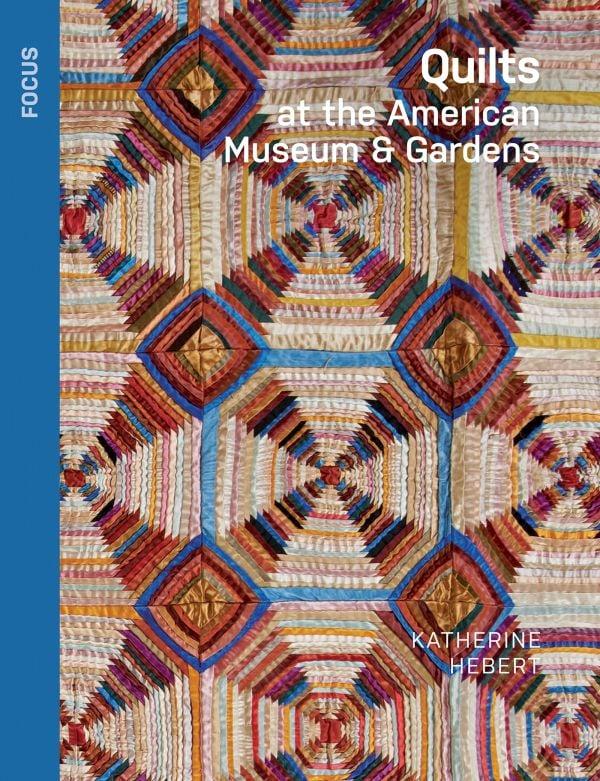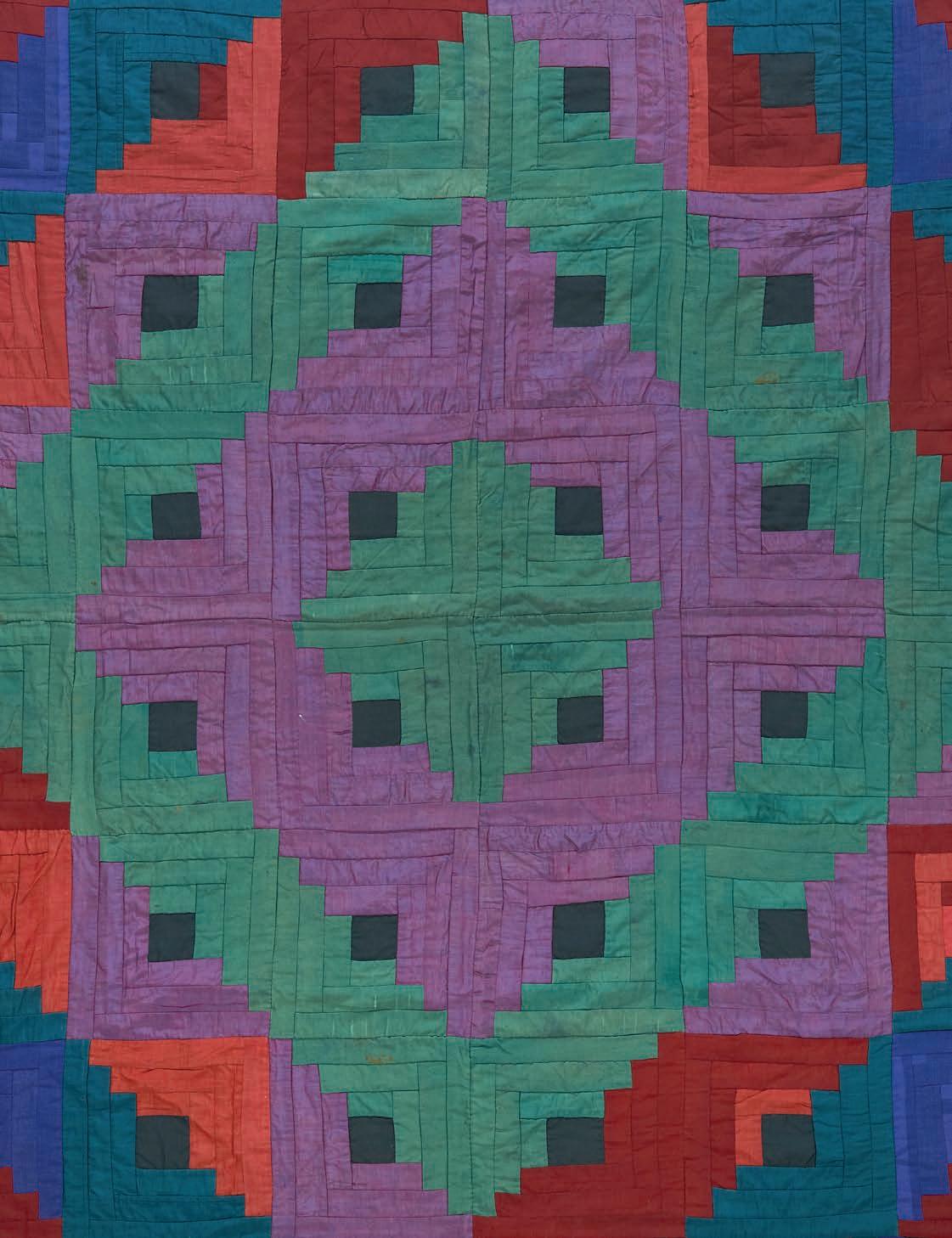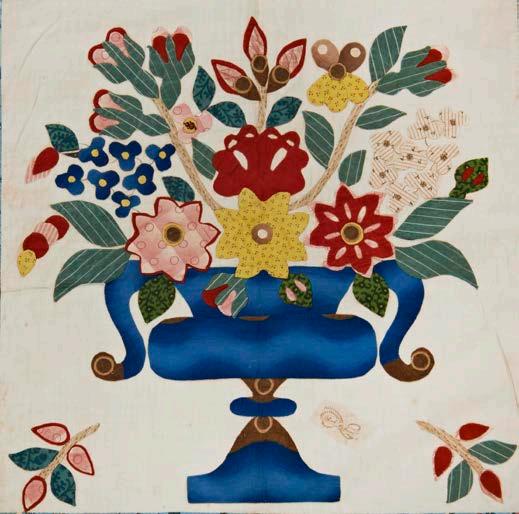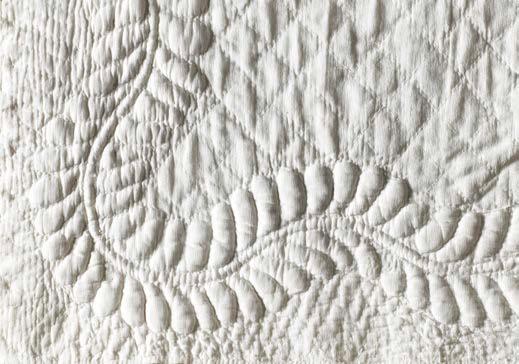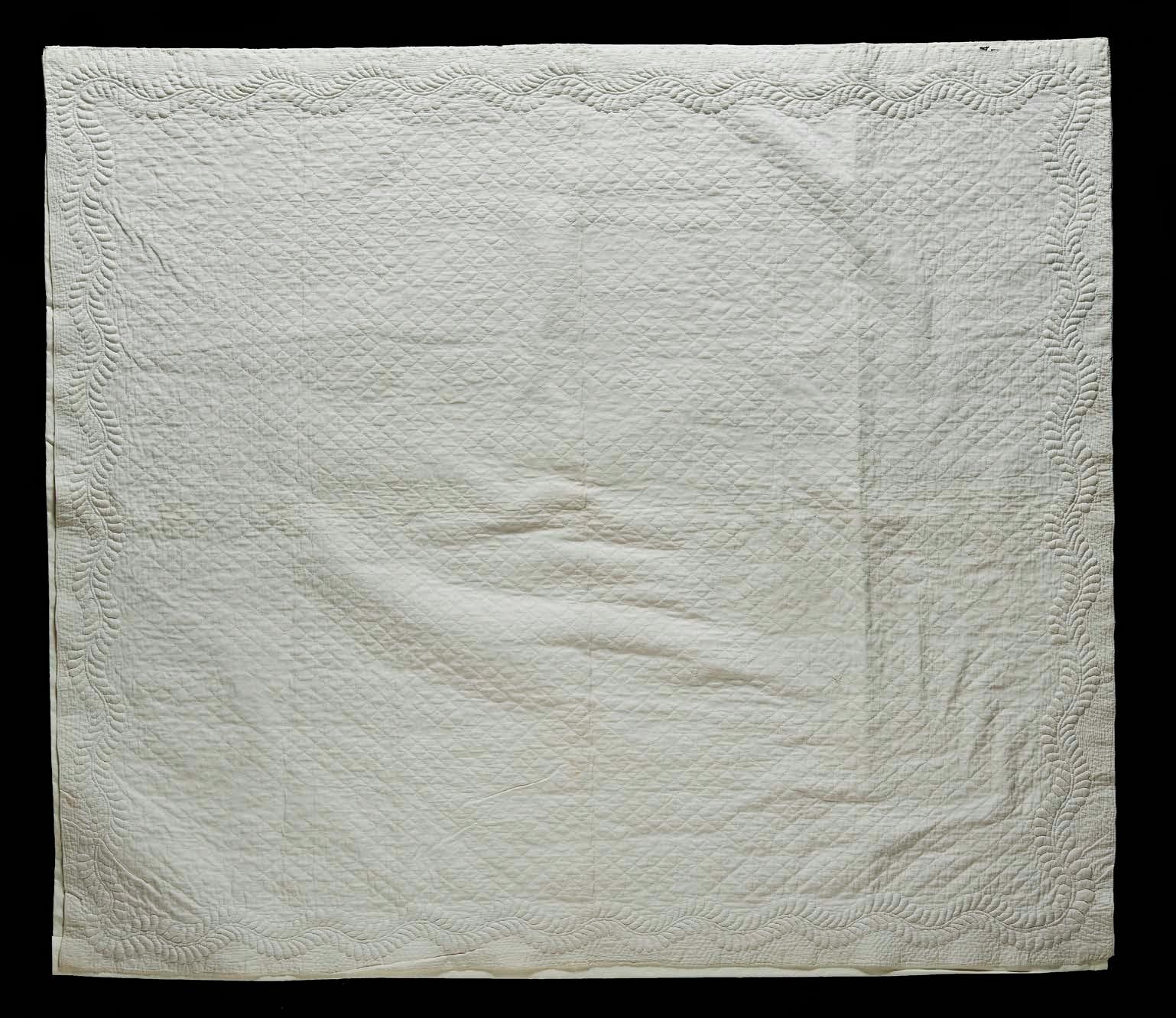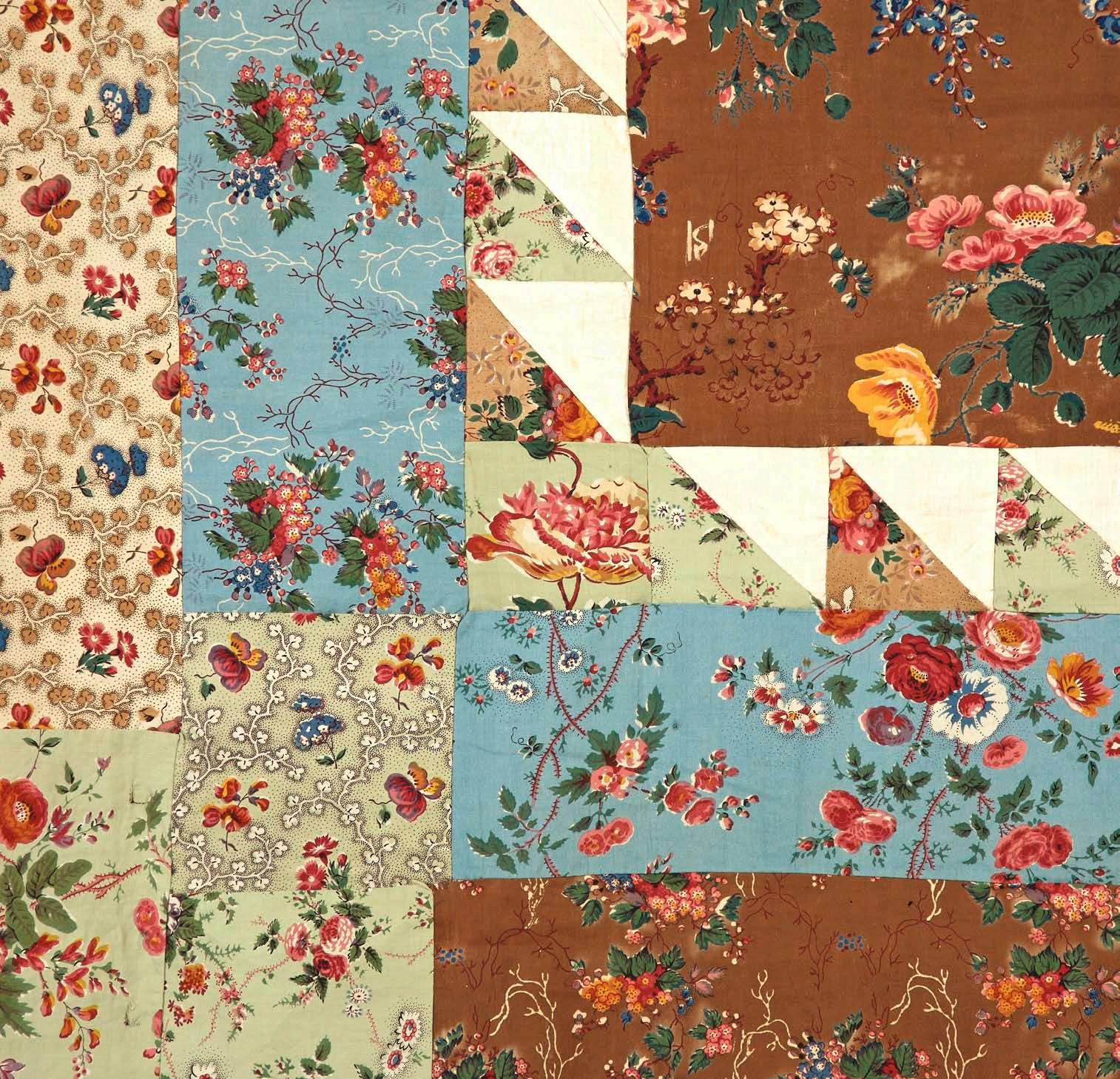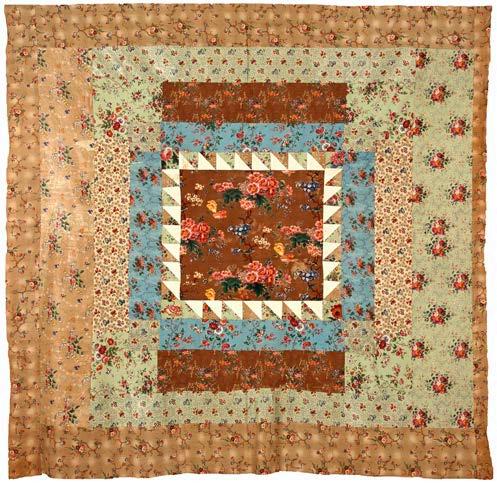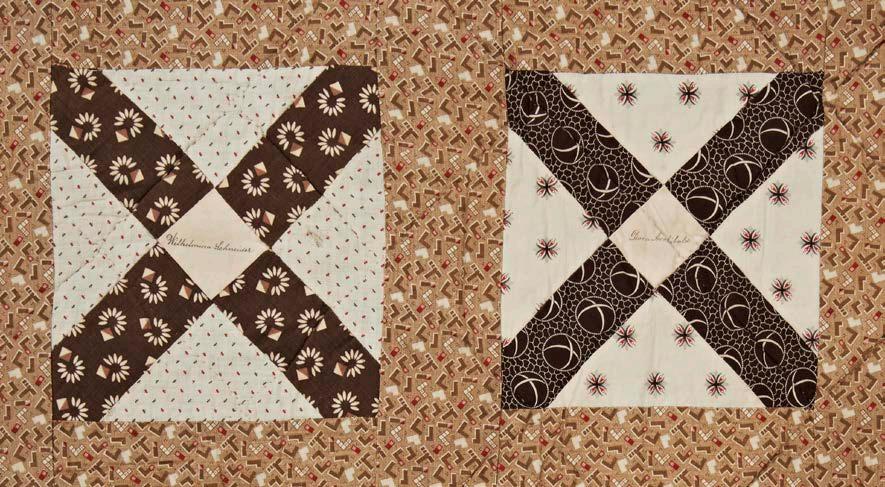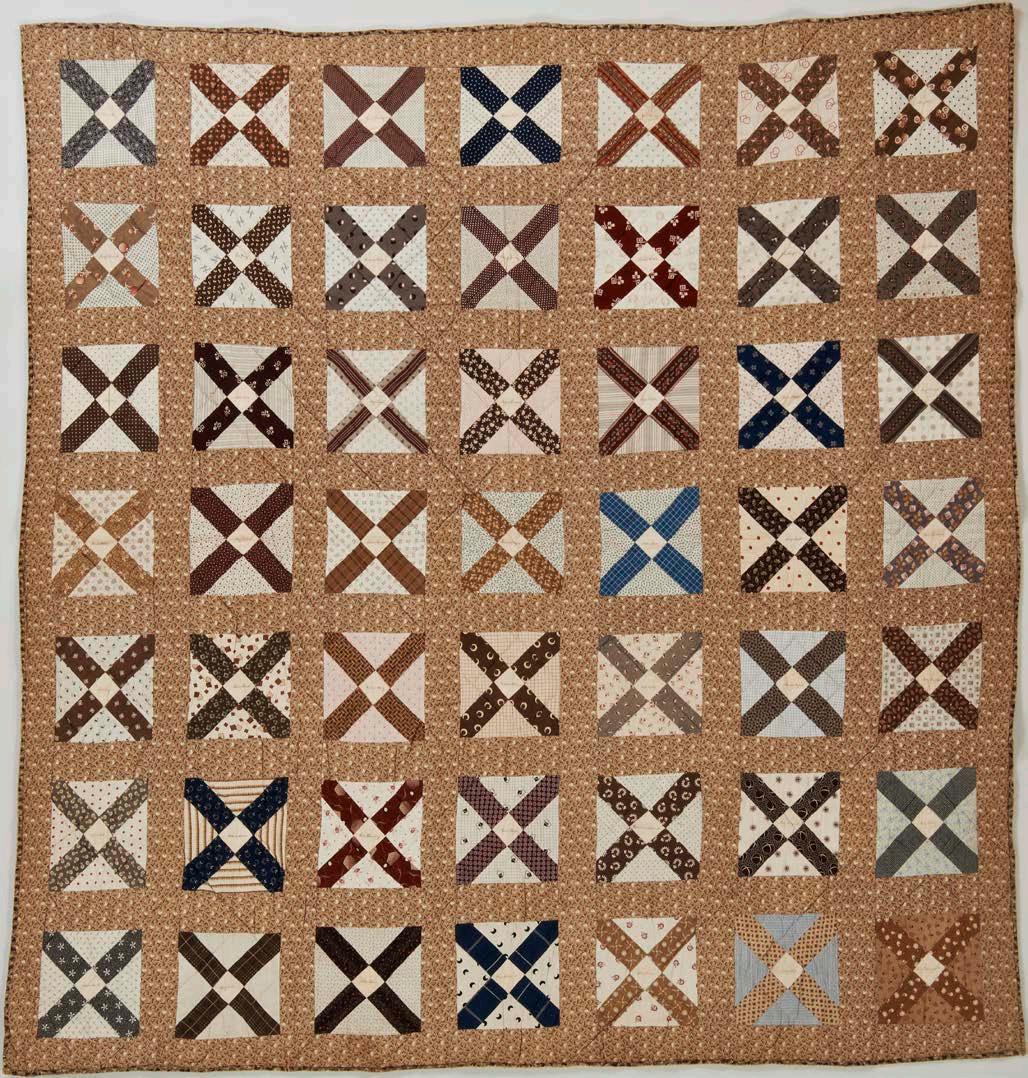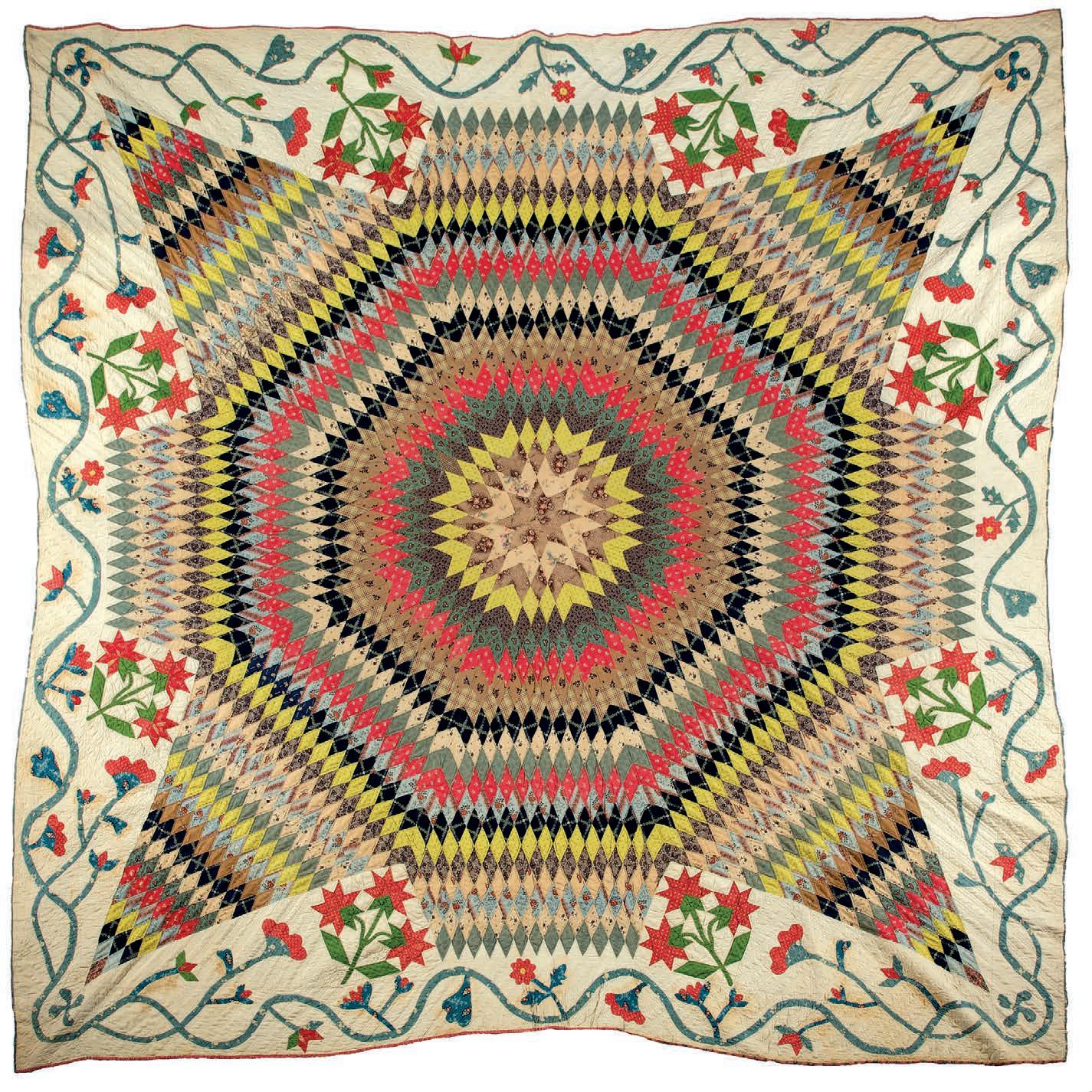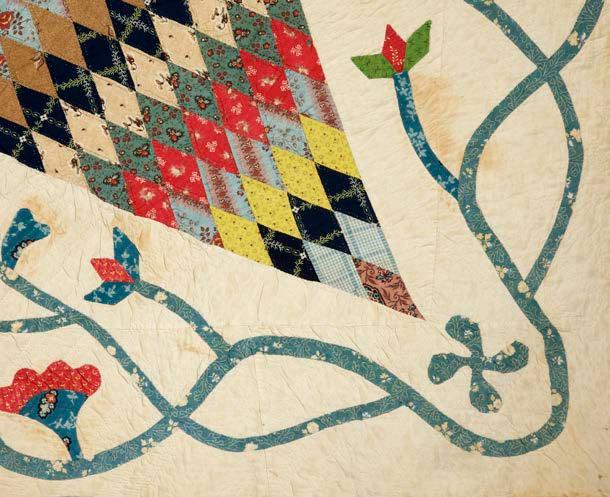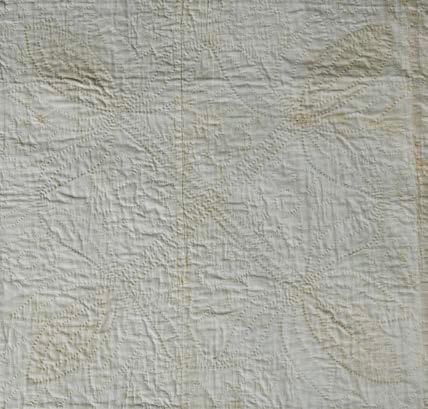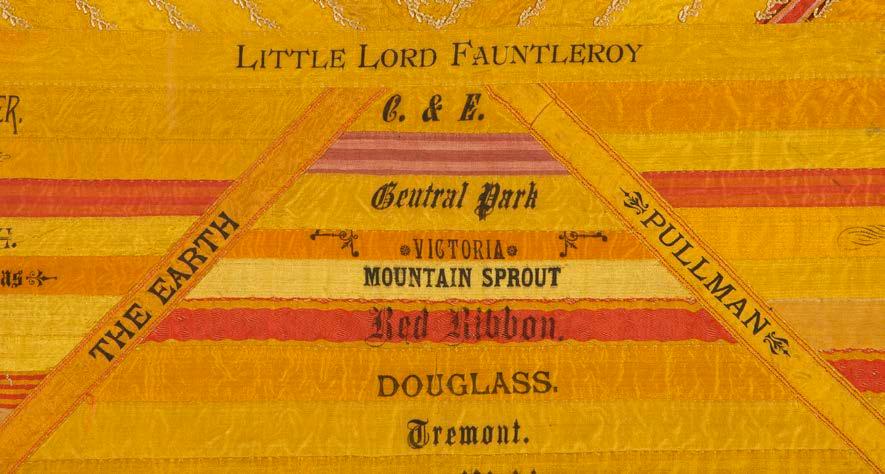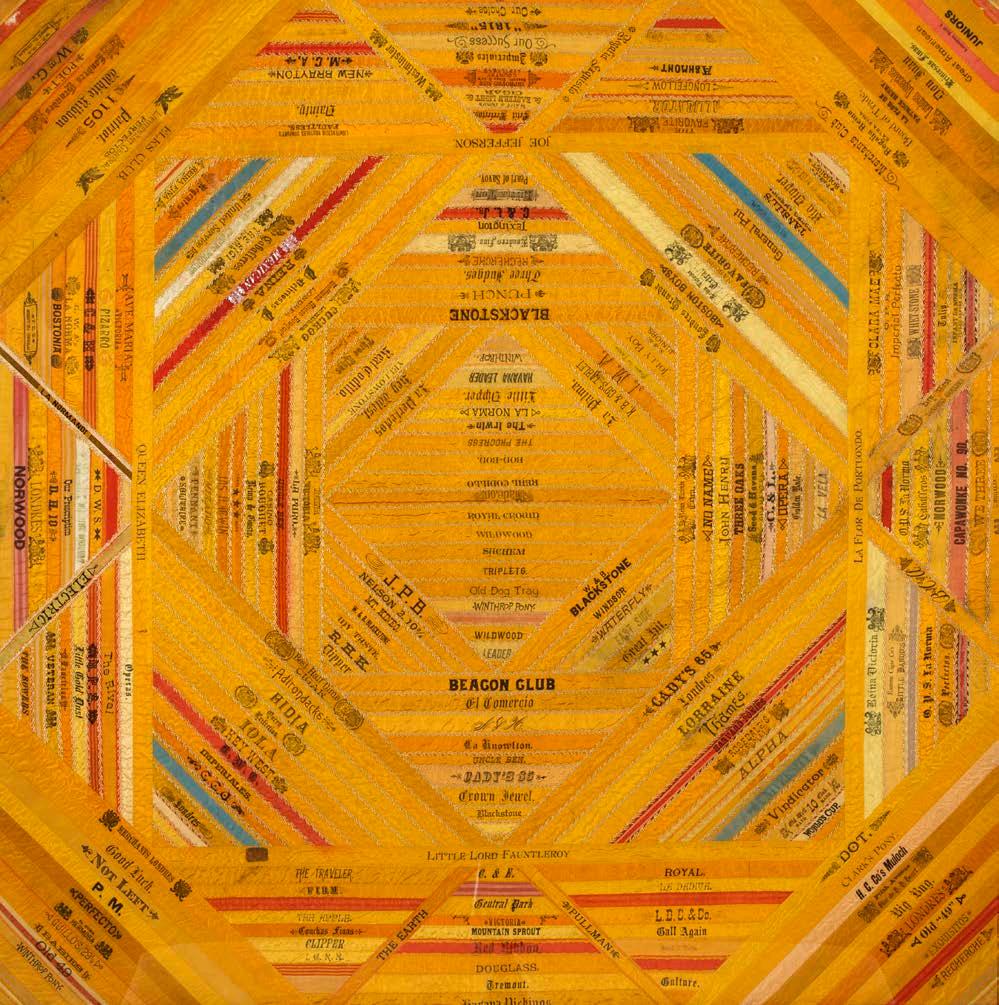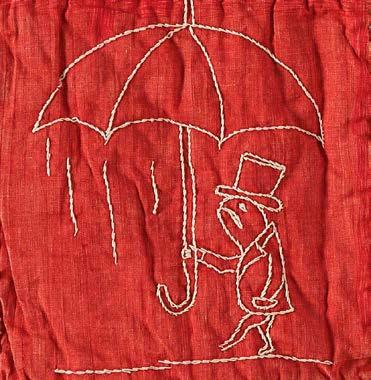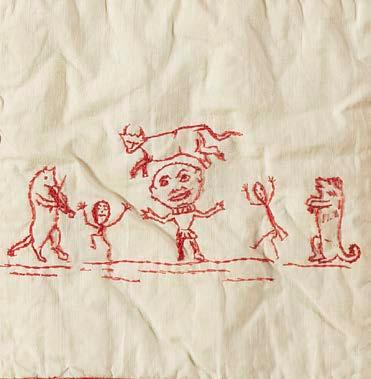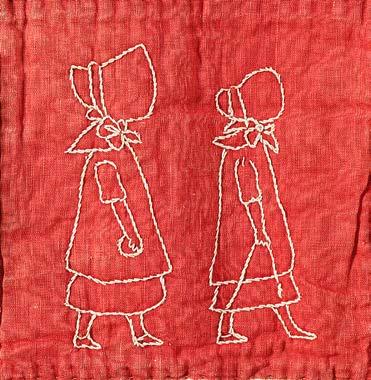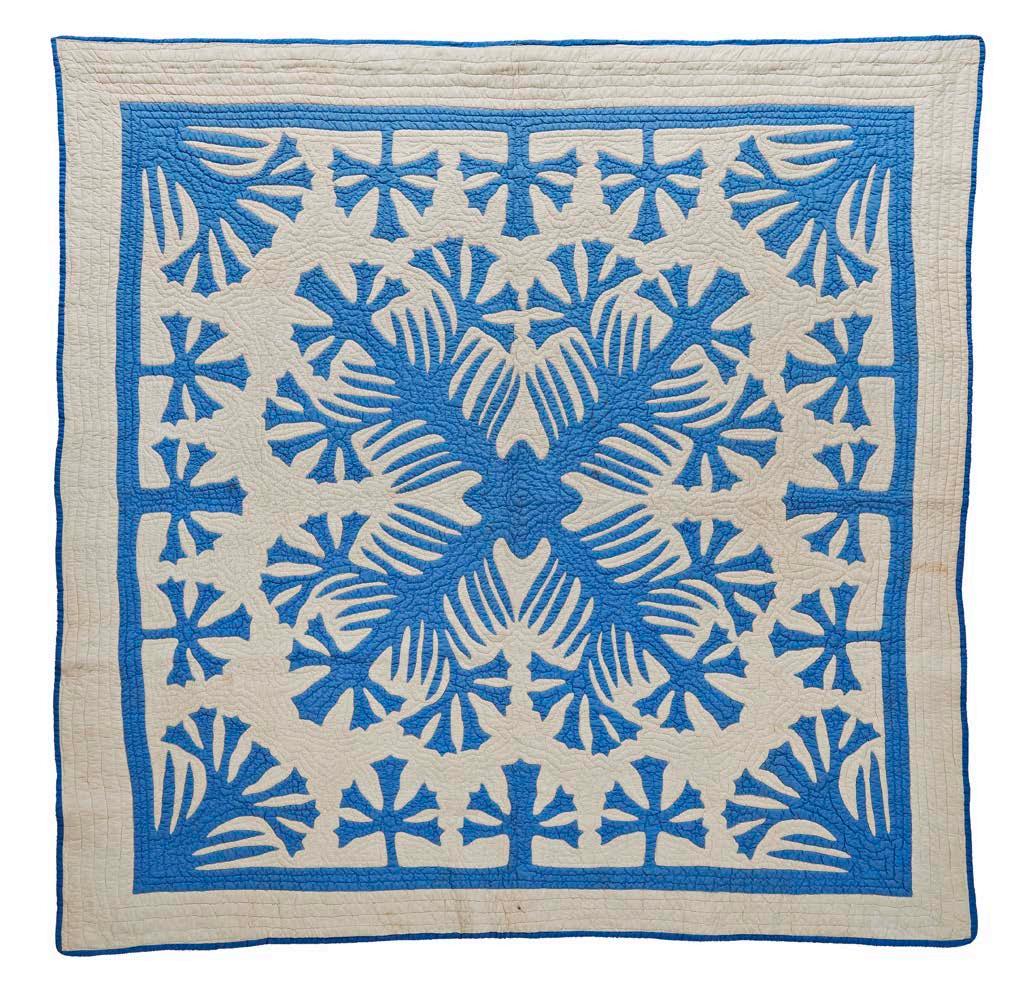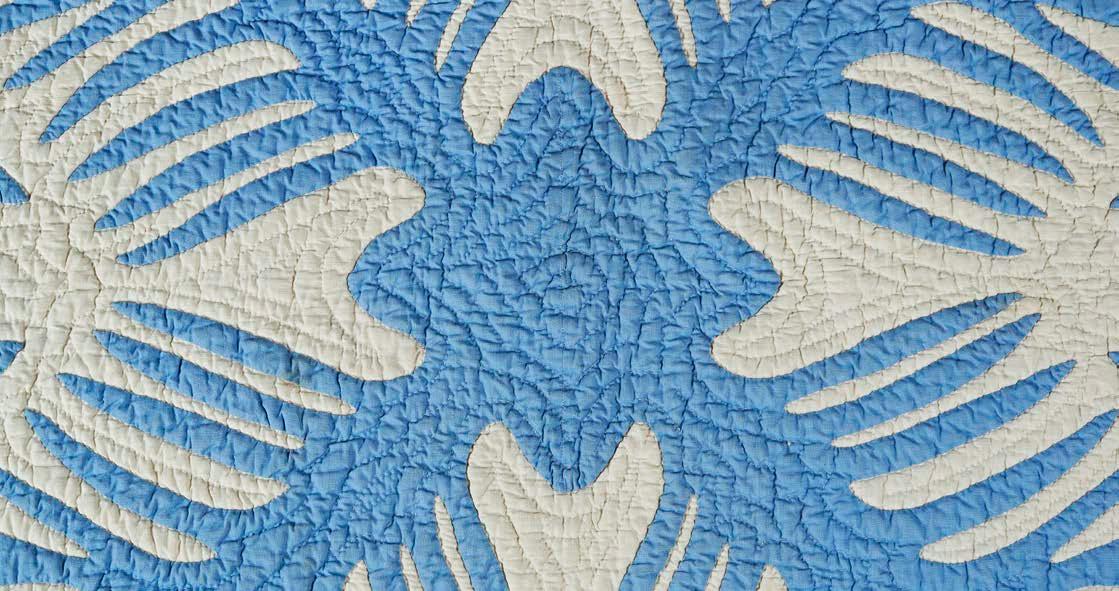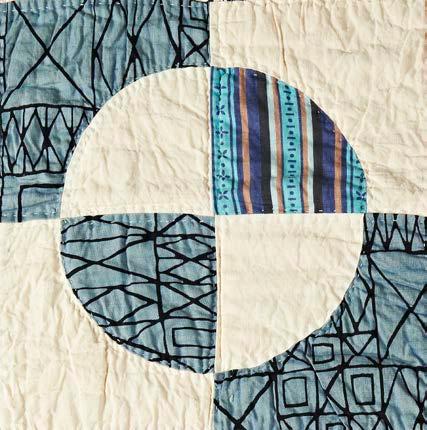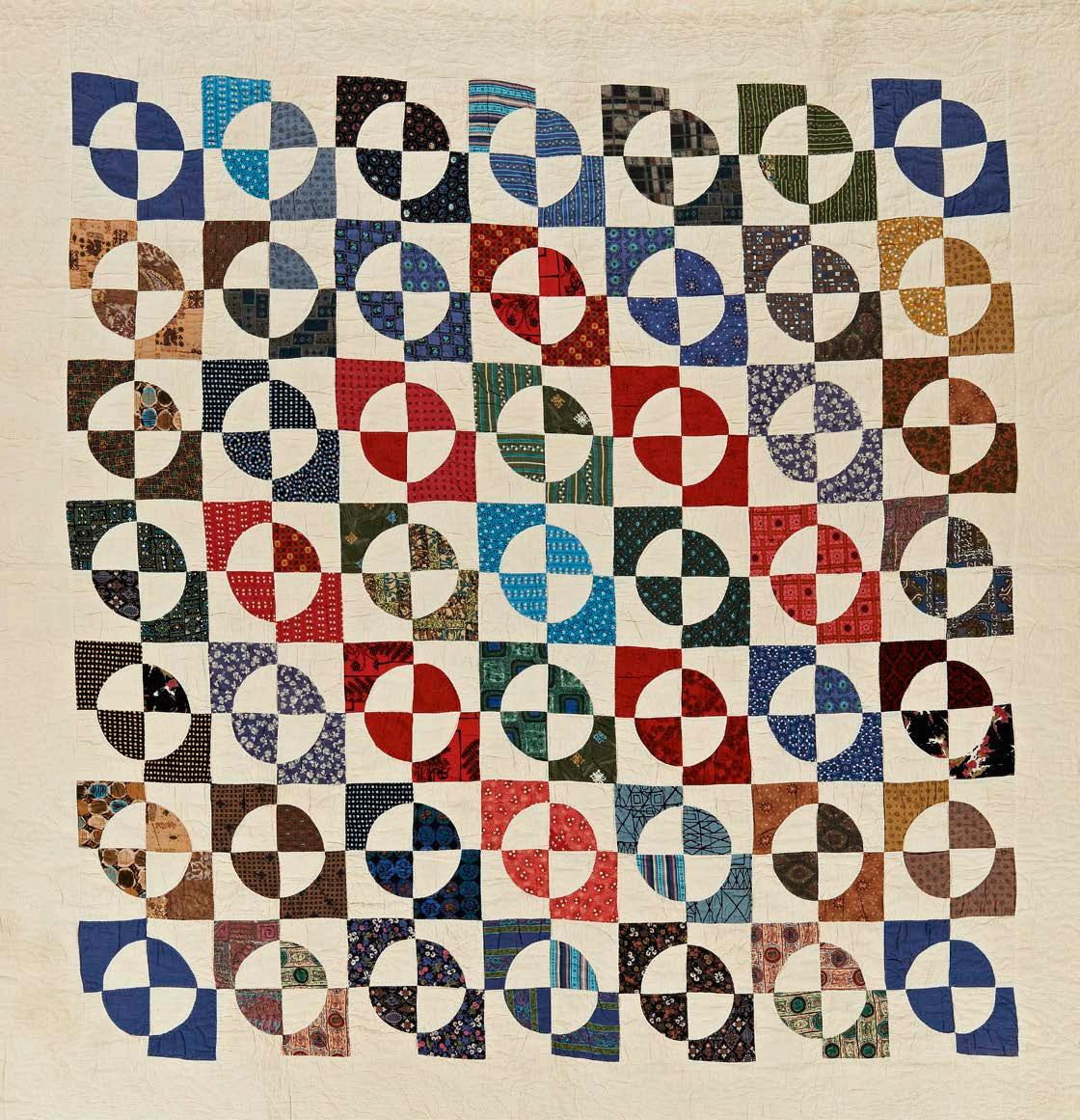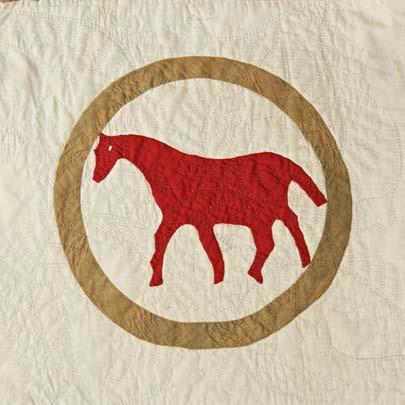White Whole-Cloth Quilt
c.1810
Possibly Pennsylvania
Possibly made by Margaret ‘Peggy’ (Ritchie) Wylie
Stuffed, hand sewn and quilted
L 122 cm x W 107 cm (48 in. x 42 in.)
1987.161
the descendants of Judge Andrew wylie (1814–1905) donated this whole-cloth quilt. It is said to have belonged to him as a baby in Canonsburg, Pennsylvania, and may have been made by his mother, Margaret (1791–1859).
Judge wylie was appointed as Associate Justice of the supreme Court of the district of Columbia by President Abraham Lincoln (1809–1865) and was later involved in the legal proceedings against the conspirators who arranged Lincoln’s assassination. wylie issued a writ of habeas corpus for Mary surratt (1823–1865) to determine whether her imprisonment as part of the conspiracy was legal. the writ was never enacted, and surratt became the first woman in America to be hanged.
Family records state that this quilt, with its lightly stuffed scrolling feathers, was made for a cot. not all quilted pieces of this size were for this purpose, but were instead made as furniture covers and pillow shams.
Chintz Medallion Quilt Top
estimated date c.1825
USA
Hand sewn
L 208 cm × W 208 cm (82 in. × 82 in.) 1968.114
early patchwork quilts that are made from several different fabrics fall into two design categories: pieced scrap quilts like this one, or broderie-perse appliqué like the Appliquéd Chintz tiles Quilt top on the next page. Most follow the medallion format, as here, with a central block surrounded by fabric borders.
the edges of this piece are unfinished, suggesting it is an incomplete quilt top. the fabrics are in a variety of colours, with the dark brown and vivid blue fabrics leaping out from the more subdued tan and light green cottons. these chintz fabrics, with a coloured background, were popular in the early 1800s; before that, a white ground was preferred.
At first glance the top seems random in its arrangement, but care has been taken with the placement of pieces. each of the corner squares of the sawtooth border has been cut so that it contains a flower.
Flying Clouds Friendship Quilt
estimated date 1883–99
Possibly Philadelphia, Pennsylvania
Hand sewn and quilted
L 204 cm × W 200 cm (80 in. × 78 in.)
1958.3
signature quilts that use a repeated block design to create a pattern over the quilt top are called friendship quilts to distinguish them from the elaborately appliquéd Album quilts. the fashion for signature quilts originated in Pennsylvania and Maryland in the early 1840s. Interest fluctuated throughout the remainder of the nineteenth century, although the style regained some lost popularity in the later decades. the writing on this quilt all appears to be by the same hand. often someone with the neatest handwriting was chosen to write the name of the maker of each block. several of the signatories have the same last name. Aimee and Laura Albert, nellie and Annie Hill, and tacy and Lizzie tomson are listed as sisters living in households in Philadelphia in the 1880 Federal Census, all aged between three and seven. Perhaps these girls attended the same school in later years and made this quilt.
Star of Bethlehem Quilt
estimated date 1830–99
USA
Hand sewn and quilted L 274 cm × W 264 cm (108 in. × 104 in.)
this quilt has been pieced from diamonds (cut from patterned cotton and sewn over papers) to form a star. Interestingly, four of the star points have been terminated so that they align with the corner points. the skill in making such a quilt lies in the care taken in sewing these diamonds together. small errors in stitching are exaggerated as the quilter moves away from the centre. this can result in an uneven finish and wobbly edges, as seen here. the white background around the points of the star has been filled with Carolina Lily patchwork and an appliqué scrolling floral vine. It is possible that the blue stems and leaves of the vine were originally green and dyed using a method of applying blue and yellow dye over one another to achieve the desired colour. over time the yellow has faded, leaving the blue hue.
Tulips and Ribbons Quilt
estimated date 1840–1900
Pennsylvania
Hand sewn and quilted
L 233.5 cm × W 218 cm (92 in. × 86 in.)
1958.129
twenty bright tulip blocks form the centre of this quilt. each patch contains four of the spring flowers in a symmetrical arrangement. the appliqué blocks are surrounded by a patchwork border pieced from turkey red and white triangles to form a zigzag shape. this must have reminded someone of a loose piece of ribbon and inspired them to name the quilt.
It is not unusual for early American quilts to have uneven sides. Here, a plain white cotton border has been added to three edges. It is likely the top has been kept free of an additional border so that it could sit comfortably on a bed with a bolster pillow. neat rows of quilting add definition to the tulip design, and flowers resembling daisies fill the white spaces around the colour patchwork. the white border is quilted with a running feather vine.
Cigar Silk Ribbon Quilt Top
estimated date 1880–1900
USA
Hand sewn and embroidered
L 104 cm × W 104 cm (41 in. × 41 in.)
1964.338
during the late 1800s, cigar companies tied bundles of cigars with silk ribbons, which had the name of the company or cigar manufacturer stamped on them. Finer cigars sometimes had the name woven into the silk. Cigar smoking in the nineteenth century was a common activity, so most households had a plentiful supply of these silk ties.
the bright gold colour of the ribbons is still apparent in this piece. It is easy to see why so many women saved them to create such sumptuous designs. Yellow was the most common colour for the silk ribbons; other colours such as blue, red and pink were also used.
the ribbons here have been arranged in a manner as to suggest a squarein-a-square patchwork pattern. the seams have been decorated with feather embroidery stitches, as often seen on silk Crazy quilts of the same period.
Redwork Quilt
estimated date 1915–30
USA
Hand embroidered and quilted L 203 cm × W 153.5 cm (80 in. × 60½ in.)
2011.4
Redwork became popular during the second half of the nineteenth century. the discovery of a synthetic version of turkey red dye in 1868 and the low cost of cotton led to a boom in the number of red-and-white quilts being made. Inexpensive materials meant that those with less money could engage in this hobby.
In the early 1880s, magazines began printing outline illustrations that embroiderers could copy onto fabric squares and then stitch. even people not accomplished at drawing could undertake redwork because companies manufactured squares on which pictures were already printed.
the 108 blocks here feature a range of embroidered domestic motifs. Among the images of plants and animals are whimsical depictions of anthropomorphised creatures – such as a frog in a top hat holding an umbrella – and nursery rhyme scenes. the subject matter of this quilt, and the fact that it is single bed size, suggest it was made for a child.
Ponimō‘ī Quilt
c.1958
Waimea, Hawaii
Machine sewn and hand appliquéd and quilted
L 188 cm × W 181.5 cm (74 in. × 71½ in.)
1970.76
Indigenous Pacific Islanders traditionally crafted tapa, a beaten bark cloth from the mulberry tree, for clothing and bed coverings. the cloth is often decorated with intricate dyed and stamped designs. with the arrival of european settlers, western quilting methods were introduced, offering new approaches to textile creation. the new techniques were adopted, producing quilts that reflected both western influences and a distinctly Hawaiian style.
this example, with its striking contrast between blue appliquéd design and white background with close contour quilting, is typical of Hawaiian quilts. the central pattern is achieved by folding a large piece of fabric and cutting it to produce a symmetrical motif.
the pattern of appliqué flowers is called ponimō‘ī, the Hawaiian word for carnation. the plant was introduced to the islands by settlers in the mid-nineteenth century. It quickly became one of the most popular flowers to use in leis – traditional Hawaiian floral garlands.
Drunkard’s Path Quilt
1960–65
Kutztown, Pennsylvania
Jennie Schwoyer
Machine sewn and hand quilted
L 198 cm × W 193 cm (78 in. × 76 in.)
1968.306
Jennie schwoyer entered this quilt into a competition at the annual Kutztown fair. It was one of ten quilts chosen by representatives of the united states Information service to be displayed in the united states of America Pavilion at expo 67. expo 67 was held in Montreal, Canada, and was the most well-attended world’s fair of the twentieth century. the united states Pavilion had 9 million visitors during the run of the exposition from April to october 1967. the theme for the American installation was ‘Creative America – the positive use of creative energy’. Alongside displays of nAsA’s space programmes, Pop Art and popular culture was an exhibit of American folk art, which included historic and contemporary artworks.
schwoyer’s arrangement of the drunkard’s Path block and her use of boldly coloured fabrics have created a striking graphic appearance with a contemporary feel.
t his edition © Kulturalis Ltd, 2025
Foreword © Kaffe Fassett, 2025
All other texts © American Museum & Gardens, 2025
Illustrations © American Museum & Gardens, 2025, unless otherwise stated
Quilt photography by d aniel Brown and dominic Brown
Front cover flap: Claire takacs Photography
Back cover flap: photo of Kaffe Fassett by Brandon Mably; photo of Katherine Hebert by Katherine Hebert p. 4, drawing: Kaffe Fassett pp. 6–7, 8–9: shadow work Photography p. 21: Casper Farrell Photography
t he authors have asserted their rights under the Copyright, d esigns and Patents Act, 1988, to be identified as the authors of this work.
First published in 2025 by Kulturalis Ltd 14 o ld Queen s treet London sw 1H 9HP united Kingdom www.kulturalis.com
In association with American Museum & Gardens Claverton Manor Bath BA2 7B d united Kingdom www.americanmuseum.org
IsB n 978-1-83636-029-2
Project manager and copy-editor: Linda s chofield designer: Matthew w ilson Indexer: n icola n icholas
Reproduction by o pero, Verona Printed and bound in Czech Republic by PB t isk, Příbram
10 9 8 7 6 5 4 3 2 1
eu GP sR Authorised Representative: e A sY ACCess sYste M eu R o P e o Ü, Mustamäe tee 50, 10621, tALLI nn , e stonia email: info@easproject.org
All rights reserved. n o part of this book may be reproduced, stored in a retrieval system or transmitted in any form or by any means electronic, mechanical, photocopying, recording or otherwise, without the written permission of the author and publisher.
every effort has been made to acknowledge correct copyright of images where applicable. Any errors or omissions are unintentional and should be notified to the publisher, who will arrange for corrections to appear in any future editions.
British Library Cataloguing in Publication d ata. A catalogue record for this book is available from the British Library.
Front cover: Log Cabin Quilt –windmill Blade Variation, see pp. 86–87.
Back cover: star of Bethlehem Quilt, see pp. 58–59.
Inside cover: Feathered star Quilt, see pp. 80–81 and nine-Patch Quilt, see pp. 66–67.
Frontispiece: Amish Log Cabin Quilt – Barn Raising Variation, see pp. 112–13.
p. 3: Baltimore Album Quilt top, see pp. 44–45.
pp. 22–23: Baskets Quilt, c.1886.
This page: detail from Adela’s ohio Farmyard Quilt, see pp. 64–65.
